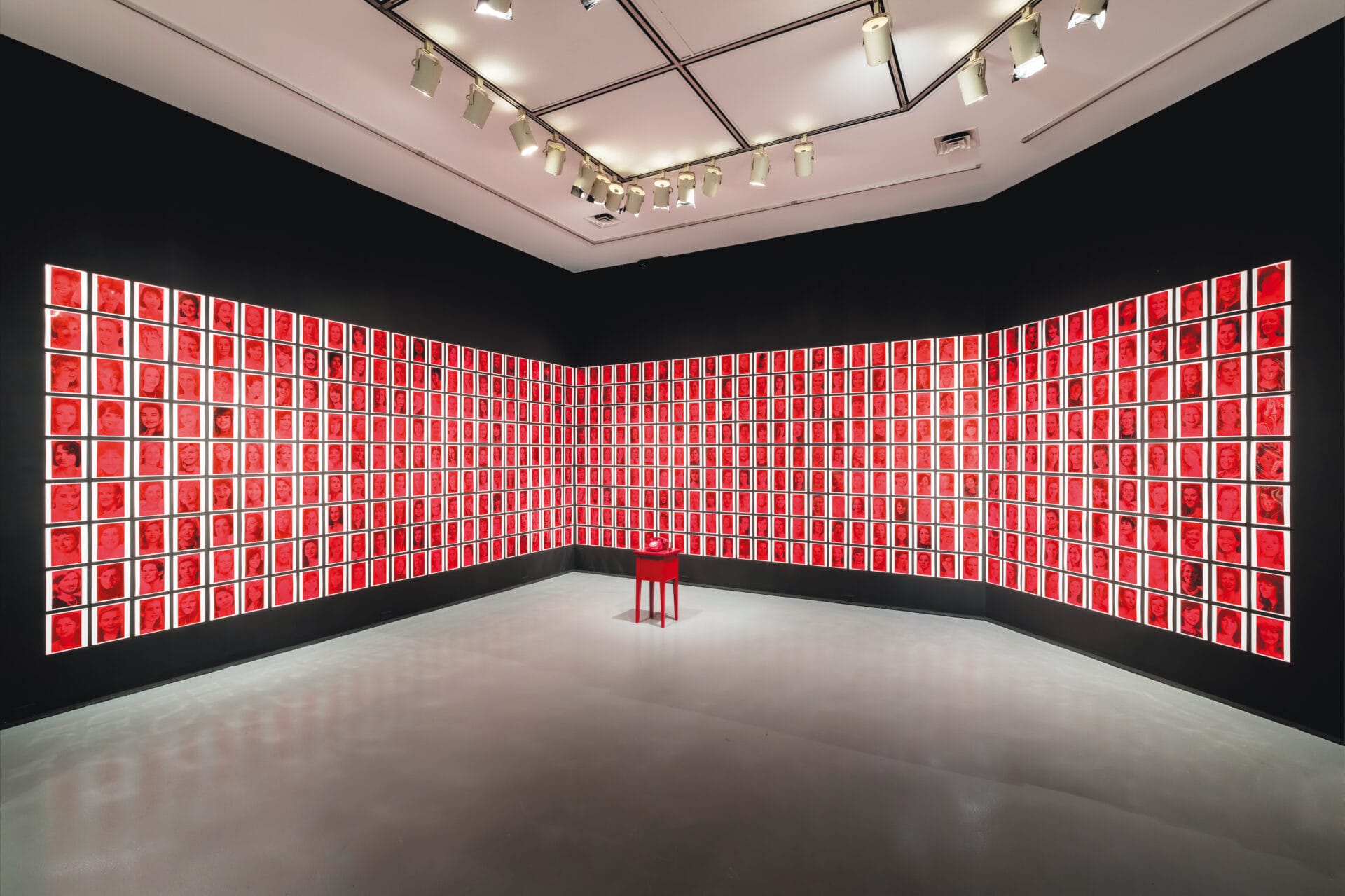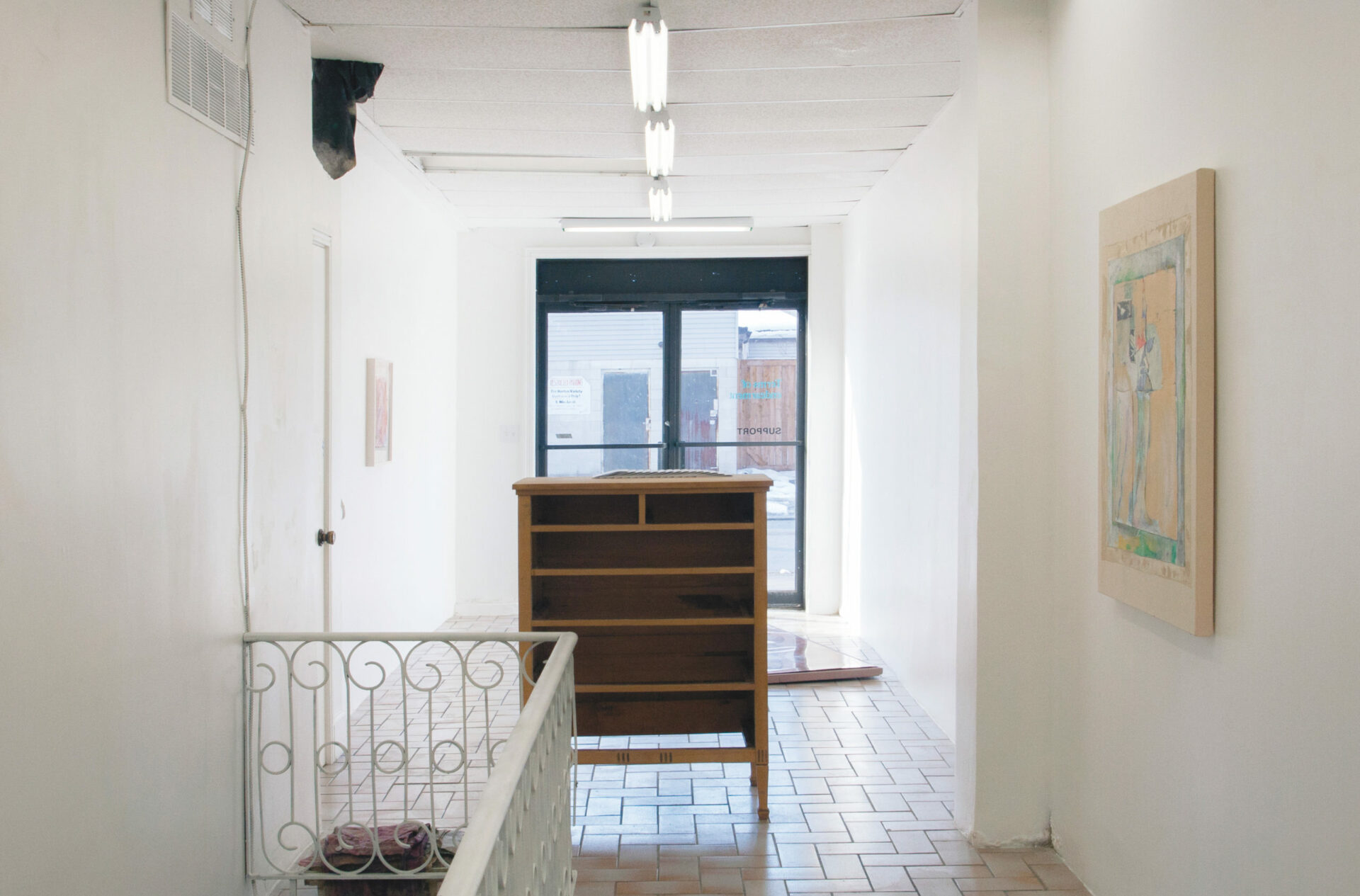
Photo: Hugo Glendinning, courtesy of Gladstone Gallery, New York & Brussels, & Sadie Coles HQ, London, U.K.
March 1 – June 16, 2019
[En anglais] Thirty years after studying at Yale University, Matthew Barney returns to his alma mater with Redoubt (2016–19). Composed of a feature-length film, an artist-conceived catalogue, a series of electroplated copper engravings, and large-scale sculptures, the exhibition dives deep into the artist’s most recent worldbuilding. Loosely adapted from the Roman myth of Diana, goddess of the hunt, and Actaeon, a mortal hunter, Redoubt is set in Idaho’s Sawtooth Mountains. Grounded in the wintry backcountry, Barney adopts the mountainous landscape to carve a narrative arc and produce a series of tools, drawings, and relics. Always one to meticulously detail each imagined universe, this newest vision is abundantly rich with symbols, patterns, and leitmotifs to be discovered and traced.
The eponymous film (2018; 94 minutes) is the central element of the work and carries the themes and images needed to access the exhibition as a whole. Organized into six chapters tracing the loose story of a wolf hunt, Barney intertwines mythology and artistic creation with backcountry survival techniques. Unfolding over seven days and nights, it features Diana (Anette Wachter), protector of wild animals in the form of a present-day sharpshooter. Followed by two attendants, the Calling Virgin (Eleanor Bauer) and the Tracking Virgin (Laura Stokes), Diana stalks an elusive wolf. In this process, she becomes the obsession of the Engraver (Matthew Barney) a stand-in for Actaeon who begins to follow the trio, documenting their actions in a series of copper engravings. At night, the Engraver returns to a trailer by a river where the Electroplater (K.J. Holmes) treats each etching to a chemical transformation. Devoid of dialogue like all of Barney’s previous films, Redoubt relies on choreography to create a storyline and connections between each character. Moving bodies, specifically those of the two Virgins and the Hoop Dancer (Sandra LaMouche of Bigstone Cree Nation), convey the tension of the hunt. Barney has an ability to create alluringly tactile sites, with each location feeling like a unique installation: the Sawtooth Mountains, Diana’s camp, and the Electroplater’s trailer. Captured in crisp high-definition, fresh wolf tracks in the snow, blue-tinted fish tanks, and hunting cartridges become sculptural objects. The visual essay, constructed by an acute selection of materials, lights, and camera angles, scales from the most elemental terrestrial particles to the cosmic universe. Meditatively slow at times, yet also surprisingly suspenseful, Redoubt is compelling in its ability to recast a Roman myth in the American wilderness by staging anthropogenic change in its purest form.
Créez-vous un compte gratuit ou connectez-vous pour lire la rubrique complète !
Mon Compte


